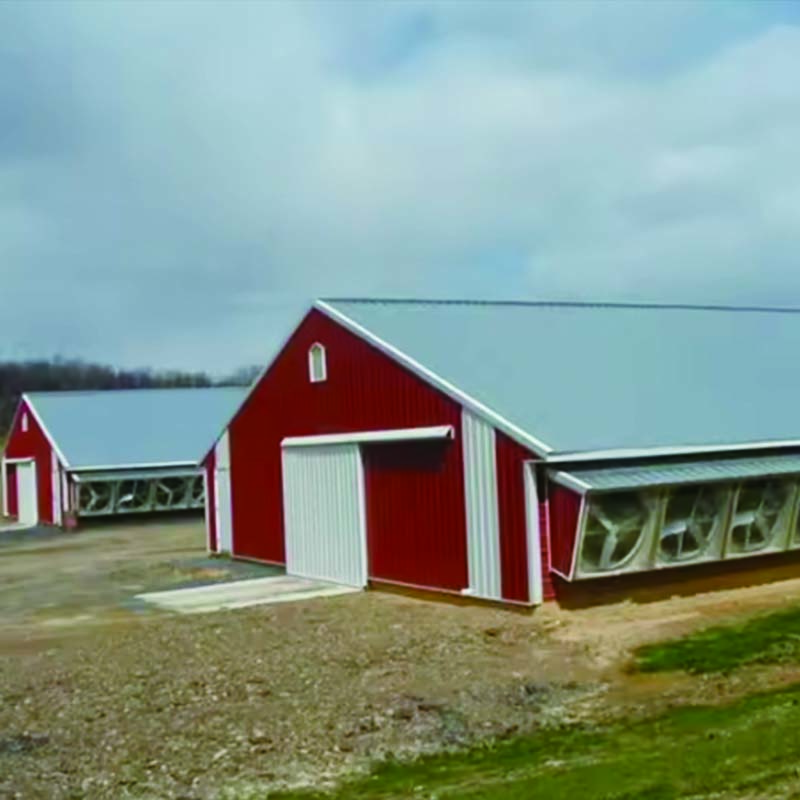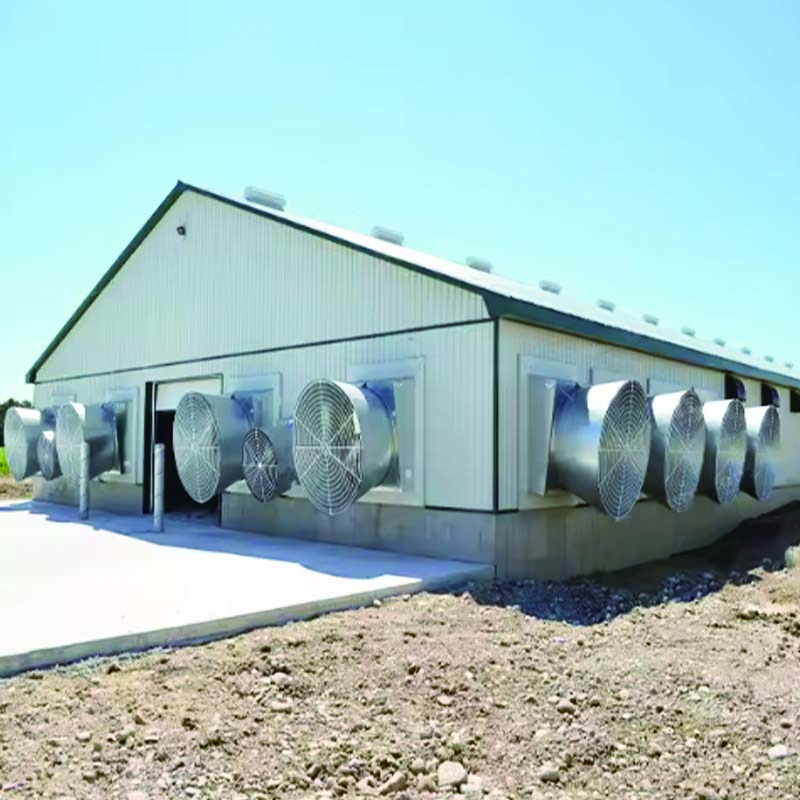Livestock and poultry houses are generally divided into 3 categories:
① Closed house. The roof and walls have certain thermal insulation performance, mainly the use of ventilation equipment for ventilation, relying on livestock and poultry body heat and heating system to maintain the temperature in the house, should be built in cold areas.
② Houses with Windows. Use doors and Windows to strengthen air convection to improve the effect of heat prevention; Keep doors and Windows closed in winter to keep the house warm. It should be built in areas that need heat preservation in winter and heat prevention in summer.
③ Open the house. The wall is partially or completely open, and the open part can be equipped with a movable curtain made of plastic film or resin to prevent wind and rain. It should be built in hot areas.
The quality of the ground of livestock and poultry houses is very important. It will not only affect the microclimate and environmental health conditions in the houses, but also affect the health and productivity of livestock and poultry, and affect the cleanliness and freshness of their products. To this end, the ground in the house is required to be solid, flat and elastic, which can play a non-slip and warm role, and is easy to clean and disinfect.The traditional method uses the cushion straw to prevent slip, cold and heat preservation, but it costs labor and materials, and is not convenient for mechanical cleaning. Concrete floors are too cold and hard. Rubber or plastic stables can be used;Electrical resistance wire or hot water pipe can also be laid under the bed of livestock and poultry to form a hot pad, but the cost is higher, and the construction and maintenance are not convenient.



With the development of building materials industry, livestock and poultry buildings will gradually adopt factory-produced light steel components and prefabricated structures composed of efficient thermal insulation and thermal insulation materials, and the architectural design will gradually develop in the direction of standardization, customization, weathering and serialization. In order to save energy and land, single-span buildings will gradually be changed to multi-span buildings, in addition to the common single-layer livestock and poultry houses, multi-layer livestock and poultry houses will also appear.




